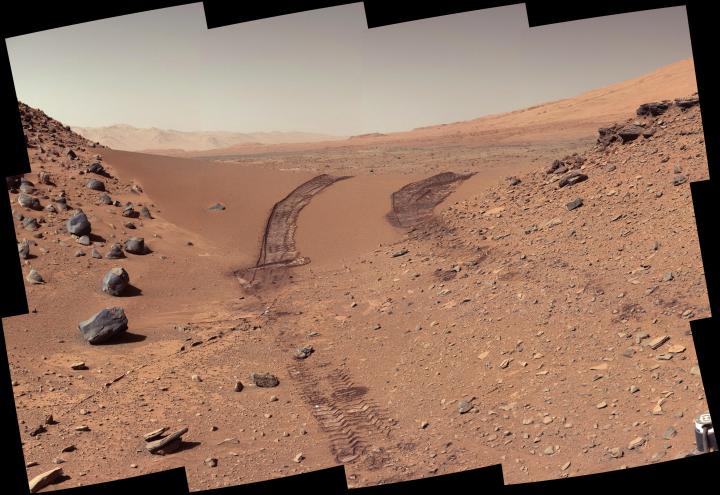
NASA’s Perseverance rover is currently exploring Mars and looking for evidence of the most tantalizing of propositions: That there could once have been life on the red planet. But it’s not as simple a flipping open a tricorder to scan for life signs. Detecting whether there ever was life there is a matter of careful, painstaking research.
One key area of research is looking for what are called organic compounds, which contain carbon along with other key elements like hydrogen, oxygen, and nitrogen. These compounds are the basis for living organisms via the carbon cycle, so identifying them on Mars is an important indicator that there could at least potentially have been life there.
The Curiosity rover found indications of organic salts on Mars in 2018, giving support to the idea Mars was potentially habitable once. However, although Curiosity’s instruments can give indications of organic compounds, they cannot give direct evidence of their existence, and definitely locating organic compounds gives an important indication of where to conduct future research.
“If we determine that there are organic salts concentrated anywhere on Mars, we’ll want to investigate those regions further, and ideally drill deeper below the surface where organic matter could be better preserved,” said James M. T. Lewis, an organic geochemist who led the research.
Lewis’s team gathered data from all of Curiosity’s instruments and puts it together to search for more direct evidence. The team recreated the conditions in Curiosity’s Sample Analysis at Mars (SAM) instrument, which uses an oven to heat samples to very high temperatures and detect what molecules are released. They then looked to see what happened to organic salts when exposed to these conditions. They found that their results matched what was found by Curiosity, supporting the idea that Curiosity really did detect organic compounds back in 2018.
“We’re trying to unravel billions of years of organic chemistry,” Lewis said, “and in that organic record there could be the ultimate prize: Evidence that life once existed on the red planet.”
The findings are published in the Journal of Geophysical Research.
Editors' Recommendations
- Final communications sent to the beloved Ingenuity Mars helicopter
- NASA is looking for volunteers for yearlong simulated Mars mission
- NASA’s Mars copter flew high, fast, far, and long. Here are the key stats
- Watch Sierra Space blow up its LIFE habitat in dramatic pressure test
- NASA regains communications with Mars helicopter Ingenuity




